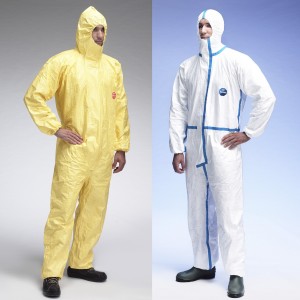Tyvek® and Tychem® protecting against Cytostatic Contamination
Posted: 9 April 2010 | Dupont | No comments yet
Any work with cytostatics requires the effective protection of workers from the dangers of drugs, which can have various carcinogenic, mutagenic and reprotoxic impact…
Any work with cytostatics requires the effective protection of workers from the dangers of drugs, which can have various carcinogenic, mutagenic and reprotoxic impact...


Cytostatics are used as drugs in cancer therapy (chemotherapy) to inhibit the multiplication of tumour cells and are also used increasingly to treat other diseases. However, their toxicity affects not only tumour cells but also healthy cells.
To prevent hazards to staff while handling cytostatics, a range of suitable precautions must be taken. Both clean room clothing and chemical protective clothing need to meet the same basic criteria for use in a clean room: the material must be low-linting, the design must be sufficiently tight, and the danger of collecting particles on the surface of the garment must be minimised. To be suitable for dealing with cytostatics, such clothing must also be comfortable to wear, it must have good electrostatic discharge efficiency an sterilisation must be possible.
As well as providing product protection, Tyvek® and Tychem® protective clothing and accessories also meet the requirements on chemical protective clothing in Category III and thus personal pro-tection.
Tyvek® and Tychem® protective clothing is available in a range of models, e.g. suit with hood or collar, integrated socks, sewn or covered seams, thumb hole, etc. The product range is supple-mented by accessories such as sleeves, overboots, overshoes, lab gowns, aprons and back-fastening gowns.




